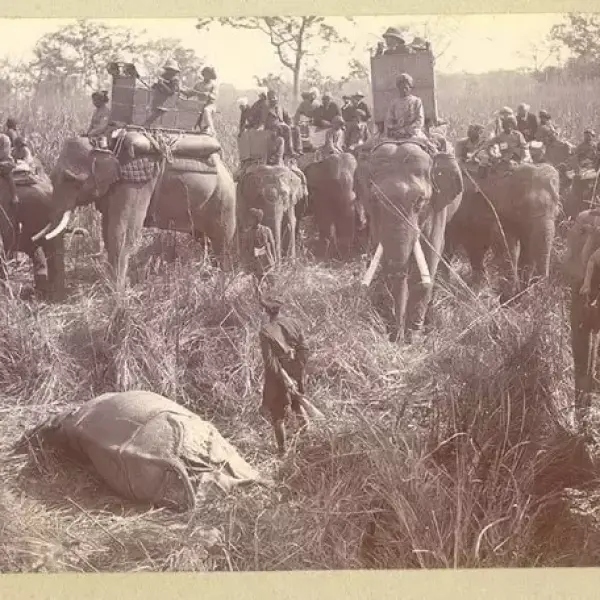King Surendra
circa 1880
King Surendra of Nepal, who reigned from 1881 until his death in 1885, was an important figure in Nepalese history during a time of significant political change. However, in 1880, Surendra was still a young prince, not yet officially king. Born in 1857, Surendra was the eldest son of King Prithvi Bir Bikram Shah and Queen Rajendra Rajya Laxmi. His father, Prithvi Bir Bikram, was the ruling king of Nepal at the time, but the country was undergoing considerable internal turmoil due to political instability and influence from external forces, particularly the British Empire.
Surendra’s early life was shaped by these political dynamics. During his father’s reign, power was largely controlled by the influential Prime Minister, Jung Bahadur Rana, who had established the Rana dynasty's dominance in Nepalese politics. The Rana family held significant control over the monarchy, with the king's role being largely ceremonial and the real power resting in the hands of the Prime Minister.
By 1880, King Prithvi Bir Bikram’s health was declining, and the political system under the Ranas was becoming more entrenched. Surendra, as the heir apparent, would have been under the tutelage of his father and his political advisors, especially the Ranas, who held substantial authority. However, the Ranas were focused on consolidating their control over the country, and Surendra’s future role as king was already overshadowed by the power of the Rana rulers.
In 1881, after the death of his father, Surendra was crowned king, but he was largely a puppet figure, with real power remaining in the hands of the Ranas. The Rana prime ministers, most notably Jung Bahadur Rana and later his descendants, controlled Nepal’s political landscape for over a century. During Surendra’s reign, Nepal was officially a monarchy, but the Ranas effectively ran the government and dictated policies.
Surendra’s reign was marked by this political subjugation, with him serving as a figurehead while the real power remained with the Rana family. He did not have much of an active role in governing Nepal, as the country was tightly controlled by the Rana dynasty. Surendra's reign would end in 1885 when he died under mysterious circumstances, with suspicions that he may have been poisoned.
Despite the limited power that King Surendra held, his time as monarch is part of the broader history of Nepal during the 19th century, a period in which the Rana family held supreme power, overshadowing the monarchy.
Envíado por OldPik el 7 de enero de 2024
Image

Iniciar sesión














Sin comentarios aún, sé el primero en comentar...